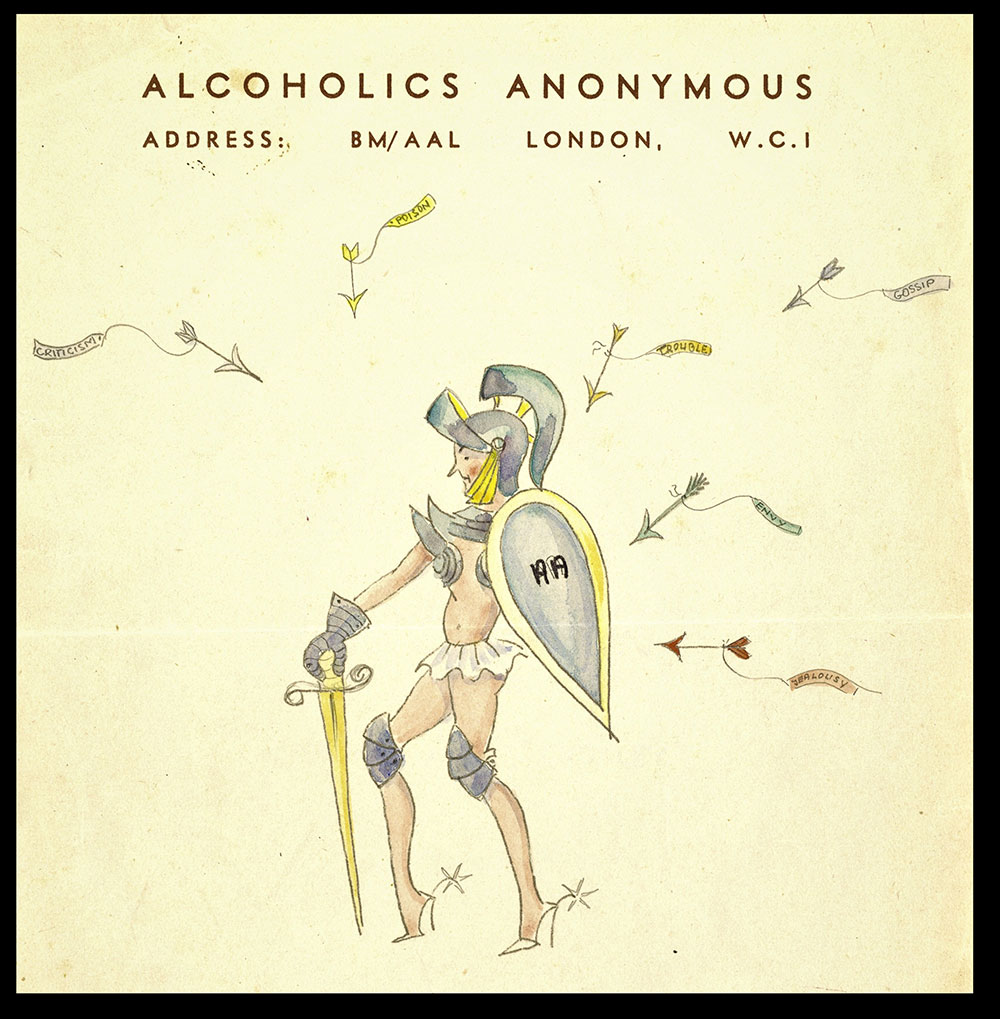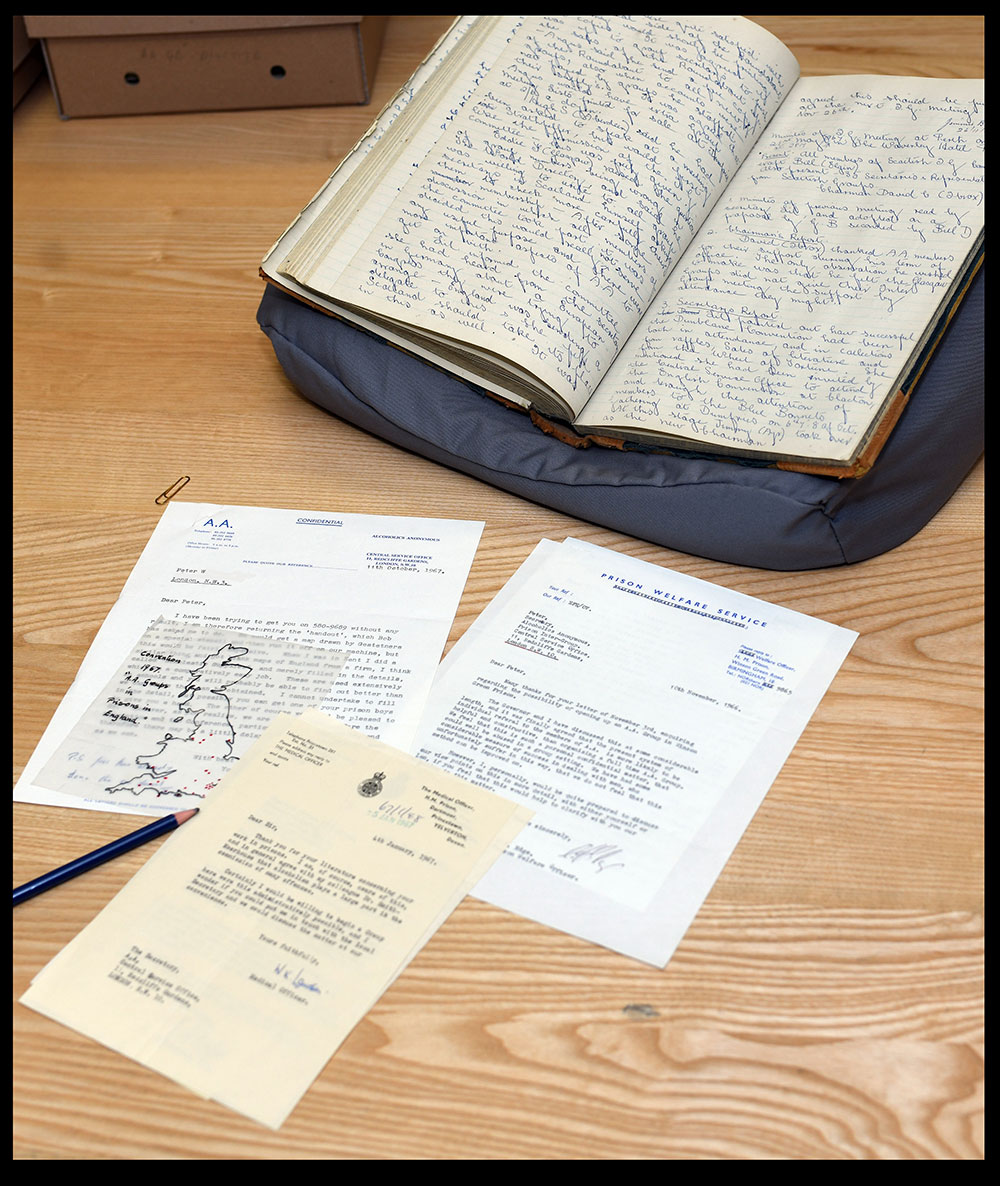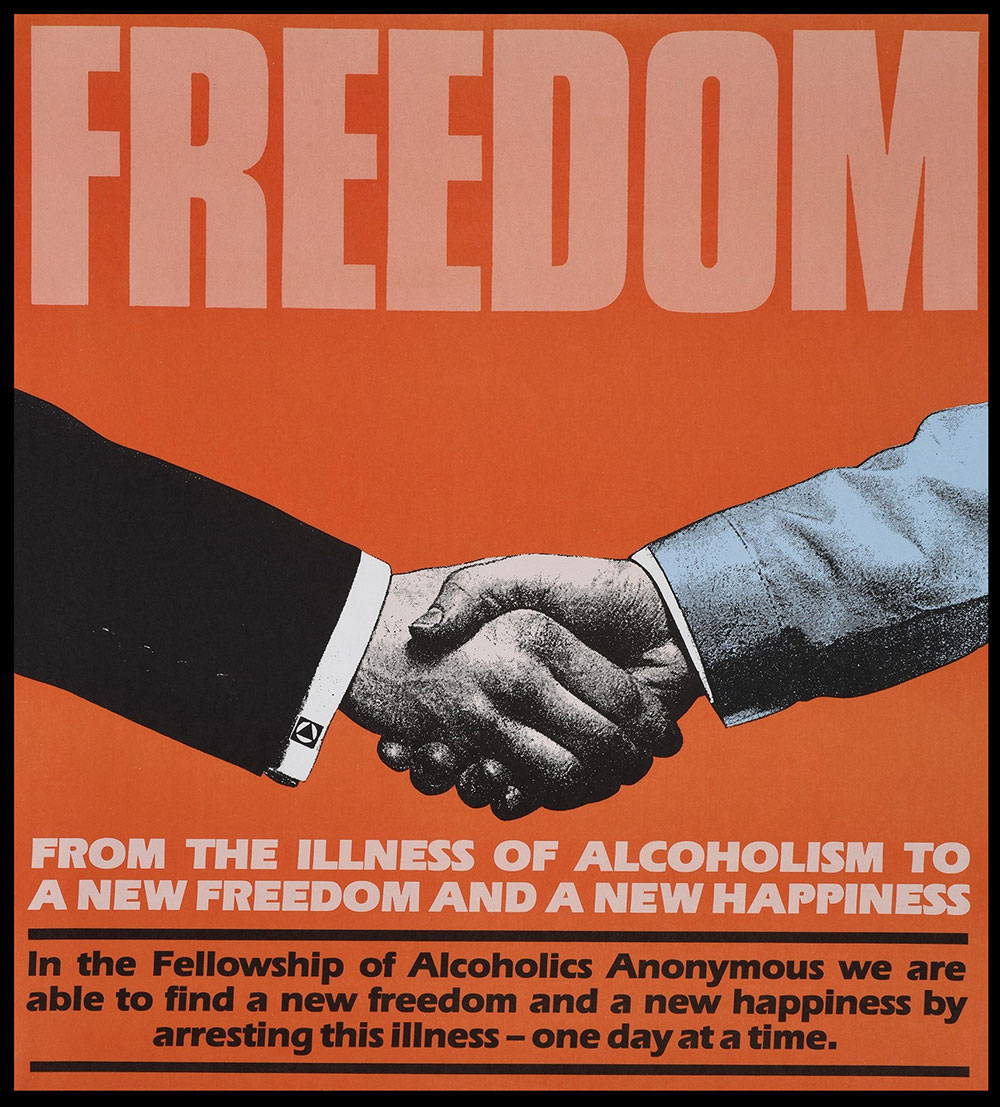Origins in North America and the Big Book
1935-1946
1935-1946
Alcoholics Anonymous began in 1935 in Akron, Ohio, as the outcome of a meeting between a New York stock broker, Bill W, and an Akron surgeon, Dr Bob. Both had been hopeless alcoholics.

Photograph of Alcoholics Anonymous founders: Dr Robert Holbrook Smith, or ‘Dr Bob’, (left) and Bill Wilson, ‘Bill W’ (right) (1930s)
Before they met, Bill and Dr. Bob had sought help for their alcoholism through the Oxford Group, a Christian organisation which promoted universal spiritual values in daily life. With the spiritual guidance of the Oxford Group and help from an old friend and fellow alcoholic Ebby T, Bill managed to achieve and maintain sobriety. A major part of Bill’s recovery was rooted in working with other alcoholics involved in the Oxford Group, and helping them with their recovery. Bill’s service led him to Dr Bob, a member of the Oxford Group who had struggled with alcoholism since medical school. When Dr Bob met Bill, the effect was immediate. At long-last, Dr Bob had found a fellow alcoholic who was succeeding in maintaining sobriety.

Bill Wilson, co-founder of Alcoholics Anonymous (1930s)
Archive reference: AA/13/1/1/16
One of the core teachings Bill imparted to Bob was that alcoholism is a malady of the mind, emotions and body. This concept was taught to Bill by Dr William D Silkworth, a medical doctor and alcohol addiction specialist who had treated Bill at the Charles B. Towns Hospital for Drug and Alcohol Addiction in New York City. Though a physician, Dr Bob had never considered that alcoholism was a disease. Following this life-changing first encounter, Bill and Dr Bob started holding regular meetings for chronic alcoholics at Akron City Hospital. Out of the shared experiences and insights of these early meetings, the nucleus for the Twelve Step Programme of Recovery was born.
While Dr Bob continued to hold successful meetings in Ohio, Bill returned to New York to establish a group there, and then work on spreading their message of recovery to the rest of America and beyond. One of the first alcoholics to join the New York group and achieve a substantial period of sobriety was Harry Pankhurst, or ‘Hank P’, who was a patient of Dr Silkworth. Both Bill W and Hank P developed the idea of publishing a book as a means of spreading the message farther and faster. The book describes each of the Twelve Steps, includes stories shared by formerly suffering alcoholics, and ultimately lays out a clear path which alcoholics can follow to achieve sobriety and live a life free of alcohol.

Early British edition of Alcoholics Anonymous: The Story of How More Than One Hundred Men Have Recovered from Alcoholism, or the Big Book (1955)
Archive reference: AA/10/1/2
Officially titled Alcoholics Anonymous: 'The Story of How Many Thousands of Men and Women Have Recovered from Alcoholism', but more well known as ‘The Big Book’, the publication revolutionised alcohol addiction treatment, and helped millions work towards sobriety. With more than 37 million copies sold, the Big Book is one of the best-selling publications of all time, has been translated into 43 languages, and was named by Time magazine as one of the most 100 influential books of the 20th century.
Back to the timeline


